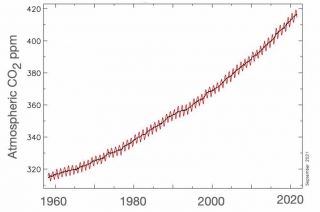
www.buildingsandcities.org/insights/commentaries/cop26-cities2.html
Next Steps for COP-26: Capability for Resilient Cities and Regions

By Sarah J. Darby (Oxford University, UK)
It is time for COP-26 to move away from arguing about carbon offset arcana and technological fixes to establishing a culture of practice and learning, with regional forums to support local action in providing shelter, food, water, business and communications. Capability addresses the questions of 'how' by creating practical solutions and carries with it public support for a liveable future.
Thousands of person-years of research, activism, organisational and diplomatic effort went into reaching the Paris Agreement at COP-21 in 2015, arguably the 'end of the beginning' of a global response to global heating. The politics of agreeing on goals and liabilities ensured that it would be a slow process. Now we and our descendants face, urgently and above all, the 'How?' questions: given the nature of this (wicked) problem (Levin et al., 2012) how do we address it with the people and resources available?
At COP-26, there are the three themes of mitigation, adaptation and finance that were covered in the Paris Agreement and a new one, 'working together': 'accelerating collaboration between governments, businesses and civil society to deliver on our climate goals faster' (UK Government, 2021: 13). This feels like progress of a sort. Billions of people - half of them city-dwellers - are already working to improve their living conditions, with variable outcomes; they are not waiting for the Paris Rulebook to be complete. Climate change response needs to happen fast, in a world riven with tensions and inequalities, and it needs to happen at the same time as meeting needs set out in the Sustainable Development Goals. To carry out a low carbon transition at speed, without massive social damage (Skølsvold and Coenen, 2021) only begins to seem feasible once national and international policy focuses on local action, skilling and participation. There has to be a shift from natural sciences and economics to the people without whom there will be no ecologically durable and socially just solutions.
The concept of capability provides a way of responding to need that starts from what people are able to do as well as what they have: social arrangements as well as individual capacities. For example, the rights to speak freely, vote and gain access to public goods as well as the abilities gained from health, temperament and earning ability (Sen, 1999). The concept is open to many interpretations (e.g. Nussbaum, 2003; Andrews et al., 2015) but there is a shared emphasis on making the most of human resourcefulness in an unequal world. From a capability standpoint, inequalities must not be ignored. In a city, for example, moving to decentralised renewables-based energy systems via purely technocentric planning may offer indirect benefits from lower carbon emissions and cleaner air to everyone, but the direct benefits will largely go to people who own the supply, demand and storage assets. In increasingly sophisticated urban infrastructures, many people could be progressively disadvantaged through living and working in low-quality buildings, with limited social networks and low levels of digital access and literacy. The 'smarter' or more sophisticated the system, in such a scenario, the further they would be left behind (Banks and Darby, 2021). Even if some individuals and organisations showed capability, the system itself would be failing.
For capability in tackling climate change, systems as a whole - people and their technologies - must be able to integrate new patterns of demand and supply, and city governments must be able to do this for interlocking infrastructures and the people who create, operate, repair and replace them. Building public support and involvement for building retrofit and low-carbon heating or cooling, for example, cannot be done without taking capability seriously. These changes will not happen if they leave people unable to meet their basic needs and they will only be able to do this if they have resilient physical and social infrastructures, including accountability and channels for rapid learning.
As we head for the 2030s, public support and involvement will become more and more vital. It is worth listening to the UK's Committee on Climate Change on this: it is a body that has perhaps analysed the prospects for implementing a zero-carbon transition more thoroughly than any other. Its priority recommendations for the Government cover the need to consider setting up dedicated delivery bodies, a public engagement and empowerment strategy, more support for local government through resourcing, guidance and reforming the planning framework, and integrating adaptation into policy (CCC, 2021). These recommendations are for the UK but are surely applicable more widely.
References
Andrews, M., Pritchett, L. & Woolcock, M. (2017). Building State Capability. Oxford: Oxford University Press. https://library.oapen.org/handle/20.500.12657/31857
CCC. (2021.) Joint Recommendations: 2021 Report to Parliament. UK Climate Change Committee. https://www.theccc.org.uk/wp-content/uploads/2021/06/CCC-Joint-Recommendations-2021-Report-to-Parliament.pdf
Banks, N. & Darby, S.J. (2021). A capability approach to smart local energy systems: aiming for 'smart and fair'. Proceedings of the European Council for an Energy-Efficient Economy Summer Study, Paper 5-105-21.
Levin, K., Cashore, B., Bernstein, S. & Auld, G. (2012). Overcoming the tragedy of super wicked problems: constraining our future selves to ameliorate global climate change. Policy Sciences, 45(20), 123-152.
Nussbaum, M. (2003). Beyond the social contract: capabilities and global justice. An Olaf Palme lecture, delivered in Oxford on 19 June 2003. Oxford Development Studies, 32 (1), 3-18.
Sen, A. (1999). Development as Freedom. New York: Oxford University Press.
Skølsvold, T.M. & Coenen, L. (2021). Are rapid and inclusive energy and climate transitions oxymorons? Towards principles of responsible acceleration. Energy Research & Social Science, 79, 102164.
UK Government. (2021). COP26 explained. https://2nsbq1gn1rl23zol93eyrccj-wpengine.netdna-ssl.com/wp-content/uploads/2021/07/COP26-Explained.pdf
Latest Peer-Reviewed Journal Content
Living labs: epistemic modelling, temporariness and land value
J Clossick, T Khonsari & U Steven
Co-creating interventions to prevent mosquito-borne disease transmission in hospitals
O Sloan Wood, E Lupenza, D M Agnello, J B Knudsen, M Msellem, K L Schiøler & F Saleh
Circularity at the neighbourhood scale: co-creative living lab lessons
J Honsa, A Versele, T Van de Kerckhove & C Piccardo
Positive energy districts and energy communities: how living labs create value
E Malakhatka, O Shafqat, A Sandoff & L Thuvander
Built environment governance and professionalism: the end of laissez-faire (again)
S Foxell
Co-creating justice in housing energy transitions through energy living labs
D Ricci, C Leiwakabessy, S van Wieringen, P de Koning & T Konstantinou
HVAC characterisation of existing Canadian buildings for decarbonisation retrofit identification
J Adebisi & J J McArthur
Simulation and the building performance gap [editorial]
M Donn
Developing criteria for effective building-sector commitments in nationally determined contributions
P Graham, K McFarlane & M Taheri
Reimagining circularity: actions for optimising the use of existing buildings
R Lundgren, R Kyrö, S Toivonen & L Tähtinen
Effective interdisciplinary stakeholder engagement in net zero building design
S Vakeva-Baird, F Tahmasebi, JJ Williams & D Mumovic
Metrics for building component disassembly potential: a practical framework
H Järvelä, A Lehto, T Pirilä & M Kuittinen
The unfitness of dwellings: why spatial and conceptual boundaries matter
E Nisonen, D Milián Bernal & S Pelsmakers
Environmental variables and air quality: implications for planning and public health
H Itzhak-Ben-Shalom, T Saroglou, V Multanen, A Vanunu, A Karnieli, D Katoshevski, N Davidovitch & I A Meir
Exploring diverse drivers behind hybrid heating solutions
S Kilpeläinen, S Pelsmakers, R Castaño-Rosa & M-S Miettinen
Urban rooms and the expanded ecology of urban living labs
E Akbil & C Butterworth
Living with extreme heat: perceptions and experiences
L King & C Demski
A systemic decision-making model for energy retrofits
C Schünemann, M Dshemuchadse & S Scherbaum
Modelling site-specific outdoor temperature for buildings in urban environments
K Cebrat, J Narożny, M Baborska-Narożny & M Smektała
Understanding shading through home-use experience, measurement and modelling
M Baborska-Narożny, K Bandurski, & M Grudzińska
Building performance simulation for sensemaking in architectural pedagogy
M Bohm
Beyond the building: governance challenges in social housing retrofit
H Charles
Heat stress in social housing districts: tree cover–built form interaction
C Lopez-Ordoñez, E Garcia-Nevado, H Coch & M Morganti
An observational analysis of shade-related pedestrian activity
M Levenson, D Pearlmutter & O Aleksandrowicz
Learning to sail a building: a people-first approach to retrofit
B Bordass, R Pender, K Steele & A Graham
Market transformations: gas conversion as a blueprint for net zero retrofit
A Gillich
Resistance against zero-emission neighbourhood infrastructuring: key lessons from Norway
T Berker & R Woods
Megatrends and weak signals shaping future real estate
S Toivonen
A strategic niche management framework to scale deep energy retrofits
T H King & M Jemtrud
Generative AI: reconfiguring supervision and doctoral research
P Boyd & D Harding
Exploring interactions between shading and view using visual difference prediction
S Wasilewski & M Andersen
How urban green infrastructure contributes to carbon neutrality [briefing note]
R Hautamäki, L Kulmala, M Ariluoma & L Järvi
Implementing and operating net zero buildings in South Africa
R Terblanche, C May & J Steward
Quantifying inter-dwelling air exchanges during fan pressurisation tests
D Glew, F Thomas, D Miles-Shenton & J Parker
Western Asian and Northern African residential building stocks: archetype analysis
S Akin, A Eghbali, C Nwagwu & E Hertwich



Latest Commentaries
Building-Related Research: New Context, New Challenges
Raymond J. Cole (University of British Columbia) reflects on the key challenges raised in the 34 commissioned essays for Buildings & Cities 5th anniversary. Not only are key research issues identified, but the consequences of changing contexts for conducting research and tailoring its influence on society are highlighted as key areas of action.
Lessons from Disaster Recovery: Build Better Before
Mary C. Comerio (University of California, Berkeley) explains why disaster recovery must begin well before a disaster occurs. The goal is to reduce the potential for damage beforehand by making housing delivery (e.g. capabilities and the physical, technical and institutional infrastructures) both more resilient and more capable of building back after disasters.